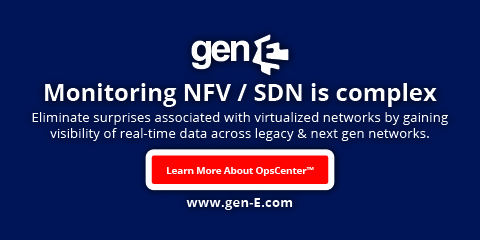Intent-Based Networking Surges Forward
By: Tim Young

As 2017 draws to a close, it looks like there are clear signs that the network is becoming smarter and more self-sustaining.
Year in and year out we’ve written about the growth of technologies such as SDN and self-healing networks, all increasingly pointing the way toward a network that can handle the details of resource allocation and other minutiae based on the goals and needs of CSPs and the subscribers they serve.
Those technologies have taken a big step forward this year with the growing prominence of intent-based networking (IBN).
As Gartner’s Andrew Lerner explained in a blog post, “intent-based networking is not a product, or a market. Instead, it is a piece of networking software that helps to plan, design and implement/operate networks that can improve network availability and agility.” Put another way, Lerner describes it as “lifecycle management software for networking infrastructure.
IBN systems, according to Lerner, have four basic characteristics:
- Translation and Validation– The ability to take a policy or broad network preference and convert that desire into a concrete network configuration. The system then must validate the resulting design to ensure that it is correct and can be implemented.
- Automated Implementation – The ability to implement the resulting network configuration automatically, through network automation, network orchestration, etc.
- Awareness of Network State – Real-time visibility into the status of the entire network, regardless of protocol or transport type, and
- Assurance and Dynamic Optimization/Remediation– Ongoing awareness of and adherence to the original intent, and the capability to adjust network settings to ensure that the original intent is being fulfilled.
IBN isn’t wholly new. Steve Harris points out on Orange Business Services’ blog that it builds on goal-based policies that have been around for two decades, though back then there wasn’t a platform capable of executing those ideas. And to those who might ask if IBN is just SDN under a different name, Harris says, “It is more like the next iteration of SDN. Where SDN comprises a series of network objects such as switches, routers and firewalls, all deployed in an agile and automated way, IBN takes the capabilities of SDN and adds extra smarts.”
And those “extra smarts” are the sort of thing that are all over other fields of technology. Machine-learning and other early iterations of AI have crept into technology we interact with on a daily basis, but the network has remained stuck in an earlier era in many ways.
“Networking missed out on the evolution to high-level programming,” David Cheriton, founder of and chief scientist for Apstra, said in an interview with the MIT Technology Review. “We’re still programming networks like we did in the ‘60s.”





















